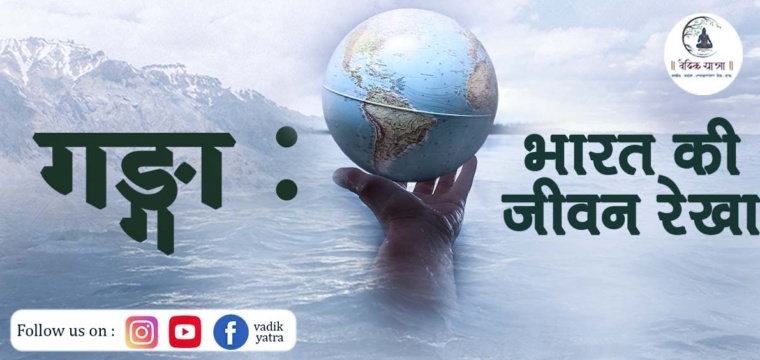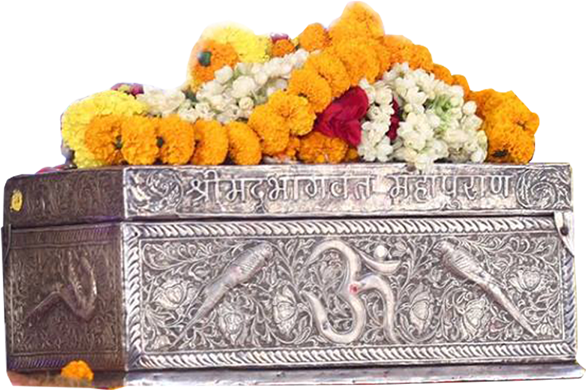
In Indian culture, the Ganges (Ganga) is considered to be the most important river because it is the life source of northern India. The Gangotri Glacier (Gaumukh) in Uttarakhand is the source of the river, which ultimately flows into the ocean through five states including Uttar Pradesh, Bihar, West Bengal, Jharkhand and Uttarakhand.
In each state in which it passes, Ganga performs different roles; in some places, the river is a source of irrigation; in others, electricity; in some places, it becomes a sin purifier; in others, it is a playful river which facilitates many water sports.
India’s longest river stretches for 2525 kilometers. Despite its geographic significance, this river is also revered as a goddess in Hindu mythology. Hindu mythology considers her to be Brahma’s daughter (the creator).
Here are some facts that prove that the Ganges is not just any river to Indians; the Ganga is a vital lifeline to them.
An Overview the Hindu Mythology of Ganga Ganga was originally in heaven, but its descent to earth is traced in many interesting legends. A few legends have been told regarding the existence of the Ganga in heaven: Here are some of the most popular versions of the origin of this sacred and mighty river: Some of the most popular versions include
Ganga is the Daughter of Himavan There is a legend that said that Ganga was the daughter of Himavan and the sister of Uma. During the gods’ summoning, Lord Indra carried Ganga to heaven.
The Curse of Becoming Water on Ganga
According to Kritivas’ Ramayana, Ganga is the daughter of Himalaya and Maina. She was kidnapped by the gods and goddesses to marry Lord Shiva. Maina cursed that Ganga would become a form of water as she could not find him in the house.
Vishnu and Bali, Lord and King
It is believed that Lord Vishnu appeared on Earth in ten different forms throughout time. In every manifestation, he helped remove huge demons or difficulties from the earth. As such, he took the form of a dwarf Brahmin as his Vamana avatar.
Once upon a time, there was an Asura (devil) king named Bali Chakravarti. He had great devotion to Lord Vishnu, due to which he became very powerful on earth! The king of the gods (Indra) feared that his power might even conquer the heavens. So he appealed to Lord Vishnu for help. Once Bali was performing the duty of donating (as much as he had asked) to Brahmins by organizing a Yagya.
In the form of a dwarf Brahmin, Vishnu appeared here and asked Bali to give the footprints of the land. To which Bali agreed, then he turned into the great Trivikrama and pushed the earth with one step, the sky with another, and Bali with the third into the bottomless (bottomless). In Hindu mythology, Brahma washed Vishnu’s feet. When his feet were in the sky and collected water in a holy kettle, this water became the Ganges, and she became known as his daughter.
Ganga’s Arrival on Earth
Similarly, there are many different stories about how Ganga came to earth, just as there are versions of his existence in heaven.
A Request from King Bhageerath
A Hindu myth describes a king named Sagar as the organizer of Ashwamedh Yagna. Indra, who was envious, stole one of the horses that were set aside for the Yagna and tied it near Kapila Muni’s meditation spot. In search of the horse, King Sagar sent his 60,000 sons and they found it.
Due to the sage’s disrespect and disturbed his meditation, the princes enraged the sage, leading them to ashes. He wandered on the earth as his last rites were not performed. King Sagar’s son Anshuman later came to Kapil’s ashram in search of his brother. Later the king apologized to Kapil.
He asked the sage if there was any way by which his brother’s soul could attain salvation, to which Kapil replied that the only way was by sprinkling the water of the Ganges on him. Anshuman did penance on the Himalayas but failed to please the gods. Later his grandson Bhagirath started doing penance and earned the grace of Brahma. Bhagirath prayer Brahma to send Ganga to Hades and Brahma accepted.
In response to the instructions of her father Brahma, the Ganges sank to the earth so that she could reach the underworld; However, the volume of Ganga was so high that she was able to destroy the earth. Bhagirath then requested Shiva to keep Ganga in a lock of his hair to pacify Shakti, and Shiva obliged. Later, the Ganges was divided into seven branches including Dwadini, Pavani, Nalini, Vakshhu, Sita, Sindhu, and Bhagirathi.
Sage Durvasa’s Curse
In Hindu mythology, Ganga is considered a daughter of Brahma. According to legend, sage Durvasa once took a bath and the wind blew off his clothes. Ganga laughed on seeing this. As a result, Durvasa felt humiliated and in anger, cursed the river Ganges to become a stream of pure water, where people would take a pure bath.
Conclusion
Though it is a blessing to be gifted with such a holy river, we no longer attach importance to it. For hundreds of years, the Ganges has satisfied many of our needs, and all we have done is pollute it. The irony is that most religious places are the ones with the highest pollution levels. We need to honor this gift and make others aware. In the name of religion, people throw plastic bags and other inorganic material in rivers, and then we blame industries for pollution. Taking the responsibility of keeping the Ganga and all other rivers of the country clean, the time has come to end the blame game. Water is not only important, it is life itself.

